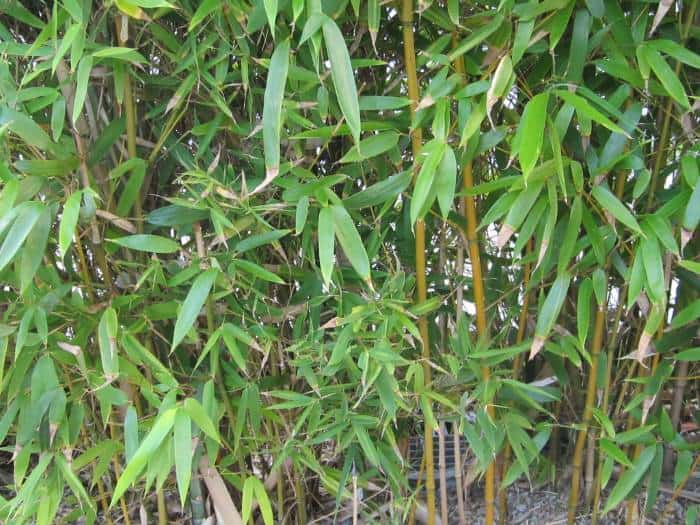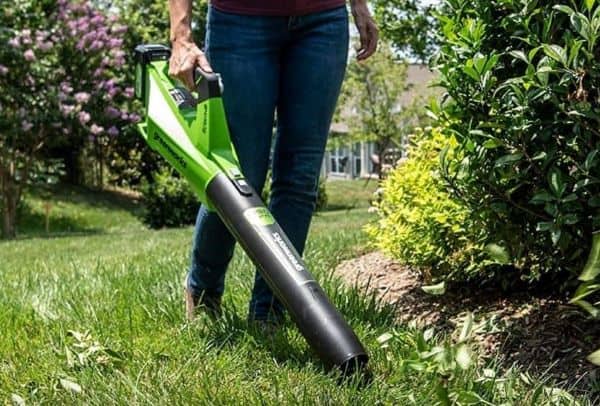
Bamboo plants are popular garden plants because they are both beautiful and easy to grow. Some types of bamboo plants are great for tropical landscaping, while others fit well in more modern or urban designs.
Different bamboo plants for your yard can work well as natural screens in a landscape. Many bamboo varieties grow quickly, so they can be used to block unattractive views. Bamboo can also or create a privacy barrier between you and your neighbors. The dense canes (culms) are both beautiful and prolific. The canes can range from green to yellow to brown to black.
Bamboo is a fast-growing evergreen plant that looks good all year long.
Two Types of Bamboo Plants: Running and Clumping
There are two basic types of bamboo plants, commonly called running and clumping.
Running bamboo spread via underground roots. These species can quickly outgrow their intended growing space. Running bamboo grows quickly. The roots are fairly shallow, and they spread with abandon. (See below for tips for containing this type of bamboo.)
Clumping bamboo varieties are great if you want some impressive bamboo canes but you don’t want the plants to take over. Clumping bamboo plants form nice, non-invasive clumps that won’t take over your yard.

Cold Hardy vs. Tropical
There are more than 100 species of bamboo plants. The tropical bamboo plants (Bambusa spp.) are medium-sized plants that are native to Southeast Asia, China, and even northern Australia. Most varieties of tropical bamboo cannot tolerate temperatures below freezing. There are more than 900 species of tropical bamboo plants.
Cold-hardy bamboos are much more commonly grown in the United States. Many species of cold hardy bamboos are available, and most can handle winter temperatures down to -15-20 degrees Fahrenheit. Species include Fargesia nitida, Fargesia demissa, and many others.
Best Growing Conditions for Bamboo Plants
Bamboo is a versatile plant that can live in various conditions. But bamboo will grow the best in full sun. Bamboo plants also need rich, slightly acidic, and well-drained soil.
Bamboo plants like moist soil, but they don’t like soggy conditions. The key is to water them lightly and frequently.
Since bamboo’s roots are thin and shallow, you must take steps to protect it from strong winds. Also, areas with cold winds are not good places to grow bamboo because the wind can kill the tips of the leaves.
Planting Bamboo
Dig a hole that is twice as big as your plant’s rootball. Put the bamboo in the hole and spread out the roots a bit.
Fill the hole back up slowly, tamping the soil down as you go. Gently fill the hole with water to help push out any air. When you plant bamboo this way, the soil around it will be loose, and the roots and rhizomes will be able to grow in it more quickly.
Water the bamboo plants once a week until they are well-rooted. If possible, give the bamboo some shade for the first two weeks after it has been planted.
Are you looking for labor-saving
outdoor power equipment? Read Gas vs. Electric Power Tools
before you buy!
How to Take Care of Bamboo
Once the plants are established, caring for bamboos is easy. Most species of bamboo plants will thrive with 1-1.5 inches of water every week. Deeply watering bamboo will help it grow deep roots, protecting it from drought.
Don’t rake up bamboo leaves from the roots if you can help it. The leaves will help protect and keep the roots moist. As they break down, they will also add essential nutrients to the soil, which will help bamboo grow.
Adding mulch to the roots of your bamboo will also help it grow strong. The best way to take care of a bamboo plant is to add a layer of compost or a balanced fertilizer in the spring.
How to Stop Running Bamboo from Spreading
When you grow running bamboo in your yard, it can sometimes get too big and spread too aggressively. To contain running bamboo, can plant it in a sturdy container and bury the container in the ground. If the bamboo is already growing in the ground, surrounding the roots with a metal will help to contain it.
For best results, the barrier should go at least 24 inches underground. A barrier of corrugated metal is ideal. The barrier should go all the way around the bamboo root ball.
Check the top of the barrier several times a year after it has been installed. Cut any roots that are growing over the barrier. For additional tips for growing bamboo plants, check with your local extension office.
Enjoy the tropical and Asian touches that bamboo will bring to your garden!




Leave a Reply